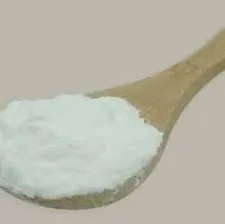The Role of Talc Filler in Plastics Enhancing Performance and Sustainability
Talc, a naturally occurring mineral composed mainly of magnesium, silicon, and oxygen, has been widely utilized as a filler in the plastics industry. Its unique properties make it an excellent additive that enhances the performance of various plastic formulations. In this article, we will explore the benefits of using talc as a filler, its impact on the quality of plastics, and its contribution to sustainable practices.
Benefits of Talc Filler
One of the most significant advantages of incorporating talc filler into plastics is its ability to improve mechanical properties. The addition of talc can enhance the rigidity and stiffness of plastic products, making them more suitable for applications requiring higher load-bearing capacities. This characteristic is particularly beneficial for the automotive and construction industries, where durable materials are essential.
Moreover, talc serves as a processing aid, facilitating easier and more efficient manufacturing processes. When added to polypropylene, for example, talc reduces the viscosity of the melt. This property allows manufacturers to process the material at lower temperatures and pressures, potentially reducing energy consumption and production costs.
Talc also plays a crucial role in improving thermal stability. Plastics reinforced with talc exhibit better heat resistance, which is critical for applications exposed to high temperatures. This makes talc-filled plastics suitable for products like automotive components and electrical housings, where thermal performance is vital.
Impact on Quality
talc filler in plastics

The impact of talc on the surface finish and aesthetic qualities of plastics should not be underestimated. Talc can enhance the surface smoothness of the final product, which is particularly valuable in consumer goods. Additionally, the mineral can contribute to a matte finish, which is often favored in various applications.
Furthermore, talc is an effective agent in reducing the coefficient of friction in plastic products. This property can lead to improved durability and reduced wear, particularly in applications involving moving parts or frictional contact. As a result, talc-filled plastics can exhibit longer lifespans and lower maintenance requirements.
Sustainability Considerations
In today’s world, sustainability is a pressing concern across industries, including plastics. Talc is a naturally occurring mineral, making it a more sustainable choice compared to synthetic fillers. Its extraction generally has a lower environmental impact, especially when sourced responsibly. Furthermore, talc contributes to reducing the overall plastic content in formulations, which can lead to lighter products, decreased material usage, and a smaller carbon footprint.
Additionally, the use of talc can enhance the recyclability of certain plastic grades. By providing improved mechanical properties and thermal stability, talc-filled plastics can withstand the recycling processes better than their non-filled counterparts. This characteristic promotes a circular economy, where materials can be reused and recycled more effectively.
Conclusion
In conclusion, talc filler plays a multifaceted role in the plastics industry, offering numerous benefits ranging from improved mechanical and thermal properties to enhanced surface aesthetics. Its contribution to the sustainability of plastic products is an added advantage in an era where environmental concerns are paramount. By incorporating talc, manufacturers can create high-quality, durable products that meet consumer demands while promoting sustainable practices. As the demand for eco-friendly materials continues to grow, talc's importance in the plastics industry will likely become even more significant.

